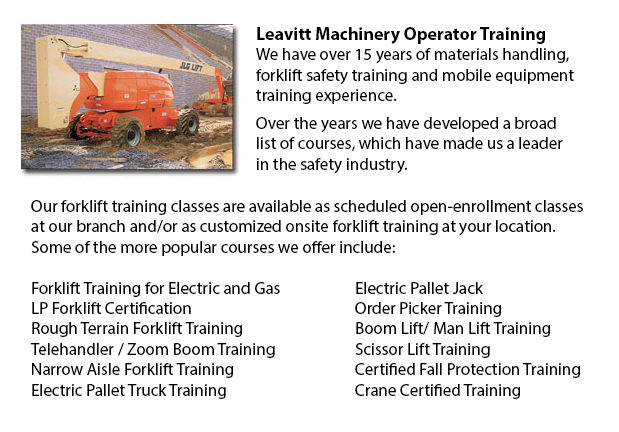
Boom Lift Operator Training Marysville - The cherry picker work platform is a kind of work platform, that will typically have a bucket or platform at the end of a hydraulic lifting system. The machine is likewise known as a boom lift, man lift, basket crane or hydraladder.
The bucket or platform is normally mounted on the back of a large vehicle like a truck, that is sometimes referred to as a bucket truck. A self-moving platform, stand-alone trailer or flat back pickup van may also be utilized. The worker stands inside the bucket and works from there. The person within the bucket often includes an upper set of controls enabling control of the position of the bucket. The reach of the bucket could be extended on various models by telescoping to adjust the lifting arm. Automatic safety controls prevent tipping. Articulated boom lifts are suggested for working within tight areas or when it is needed to clear obstacles.
As the name implies, cherry pickers were constructed for picking fruit in trees at high levels. Cherry pickers are used in a variety of other businesses, such as exterior painting, construction and mining. Occasionally they are used for cleaning windows on high building. The devices are utilized to service electrical equipment, telephone and cable television on utility poles. Fire fighters sometimes make use of cherry pickers, referred to as snorkels, when ladders are inadequate. During Christmas time, civic workers could be seen in cherry pickers hanging banners and lights.
Boom Lift Operator Safety Training
The business recommends Safety Awareness Training meets standards set by your local regulations. Curriculum consists of safe operation procedures through a combination of hands-on and classroom components.
The following topics are included: general equipment safety matter; current regulations and applicable issues; fall protection; features of boom lifts, various stationary work platform and scissor lifts.
Likewise included are the various responsibilities of the lift operator, like for example: workplace inspections; function test procedures; knowing and avoiding hazards; pre-operation check procedures; and equipment manufacturer's guidelines.
-
Manlift Safety Training Marysville
Manlift Safety Training Marysville - It is important for experienced Manlift operators to be aware of the connected hazards which come with particular types of scissor lifts. They must be able to operate the scissor lift in a way that protects not on... More -
Forklift Operator Certification Marysville
Forklift Operator Certification Marysville - Forklift operator certification is normally required for employees working in industrial, warehouse or construction environments to guarantee the safe utilization of forklifts. Workplace training need to f... More -
Crane Training School Marysville
Crane Training School Marysville - The crane training school offers industry-relevant programs. Courses provide trainees with learning outcomes that match present industry demands. Our small class sizes combine hands-on experience and theory. Our ind... More -
Heavy Equipment Training Marysville
Heavy Equipment Training Marysville - Normally, the different kinds of heavy equipment training are divided into 2 categories of machines: those that have rubber tires and tracked vehicles. Tracked vehicles comprise items like cranes, bulldozers and... More -
Counterbalance Forklift License Marysville
Counterbalance Forklift License Marysville - Forklifts, when operated by fully trained workers, are a major advantage to companies. We provide a thorough training program covering all aspects of operating a powered lift device. Counterbalance forklif... More -
Boom Lift Safety Training Marysville
Boom Lift Safey Training Marysville - Boom lifts are a type of elevated work platform or aerial lifting device which are normally utilized in warehousing, construction and industry. Boom lifts could be used in virtually any environment due to their v... More -
Aerial Lift Training Marysville
Aerial Lift Training Marysville - An aerial work platform is a mechanical access platform. This particular machinery provides access to otherwise not accessible areas for equipment or people. Likewise called an elevating work platform or aerial devic... More -
Aerial Boom Lift Training Marysville
Aerial Boom Lift Training Marysville - For people who operate or supervise the utilization of aerial lift platforms, right aerial boom lift Training is necessary. The aerial lift platform is for lifting people, materials and tools to elevated work lo... More

Forklift Training Marysville
TOLL FREE: 1-888-254-6157
Marysville, Washington
forklifttrainingmarysville.com
Email Us
About Us


